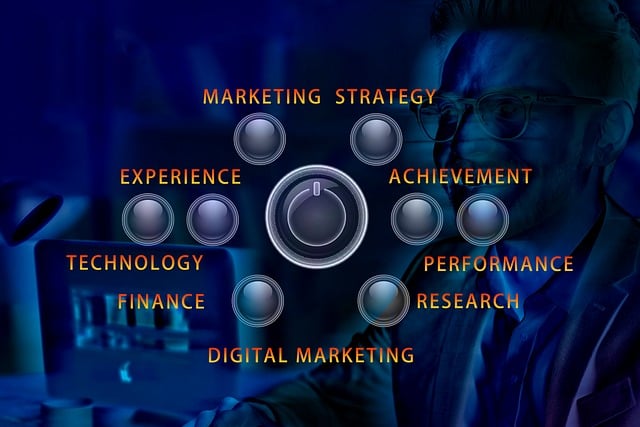Adopting AI systems is crucial for automotive repair businesses aiming for competitiveness and expansion. Utilizing predictive analytics and machine learning, AI optimizes operations and enhances customer experiences, such as predicting maintenance needs and accurately diagnosing issues. Integrating AI begins with evaluating current operations, selecting appropriate AI solutions (e.g., AI-powered diagnostics), and offering staff training to address concerns. Despite challenges like workforce training and data privacy, AI's potential to revolutionize automotive repair is significant, providing businesses a competitive edge in the evolving market.
“Unleash the Potential: AI Consulting for Your Automotive Business. In today’s digital age, Artificial Intelligence (AI) is transforming industries, and the automotive sector is no exception. This article delves into the pivotal role of AI in driving the growth of automotive repair businesses. We’ll explore how AI systems can optimize operations, enhance customer experiences, and provide data-driven insights. From understanding the technology’s potential to implementing effective strategies and navigating challenges, this guide offers a comprehensive roadmap for embracing AI systems as a catalyst for business success.”
- Understanding AI's Role in Automotive Repair Business Growth
- Implementing AI Systems: A Step-by-Step Guide
- Benefits and Challenges of AI Integration for Automotive Businesses
Understanding AI's Role in Automotive Repair Business Growth

In today’s digital era, embracing artificial intelligence (AI) is no longer an option but a necessity for automotive businesses aiming to stay competitive and drive growth. AI systems have the potential to revolutionize the way automotive repair shops operate, offering enhanced efficiency and improved customer experiences. By implementing AI technologies, such as predictive analytics and machine learning algorithms, these businesses can optimize their processes and make data-driven decisions.
For instance, AI can analyze vast amounts of vehicle data to predict maintenance needs, enabling proactive service scheduling. This not only reduces no-show rates but also enhances the overall customer experience. Furthermore, AI-powered diagnostic tools can pinpoint issues with greater accuracy, leading to faster repairs and increased shop productivity. As a result, automotive repair businesses can expand their operations, attract more customers, and ultimately foster long-term growth.
Implementing AI Systems: A Step-by-Step Guide

Implementing AI Systems: A Practical Guide for Automotive Businesses
The first step in integrating AI systems for automotive repair business growth is to assess current operations and identify areas where AI can make a significant impact. This involves understanding pain points, such as inefficiencies in scheduling, diagnostic processes, or inventory management. Once these areas are pinpointed, create a detailed plan outlining specific AI solutions tailored to address them. For instance, AI-powered diagnostics tools can analyze sensor data to detect issues more accurately and quickly than traditional methods.
Next, select the right AI technologies based on your needs and budget. This could include machine learning algorithms for predictive maintenance, natural language processing (NLP) for streamlining communication with customers, or robotic process automation (RPA) to automate repetitive tasks. Ensure that chosen tools integrate seamlessly with existing systems to maximize efficiency and avoid disruptions. Finally, provide comprehensive training to staff, highlighting the benefits of AI adoption while addressing any concerns about job displacement. This proactive approach will facilitate a smooth transition, empowering employees to leverage AI for enhanced productivity and improved customer experiences.
Benefits and Challenges of AI Integration for Automotive Businesses

The integration of AI systems offers significant advantages for automotive businesses, particularly in terms of AI consulting for automotive repair business growth. These advanced technologies can enhance efficiency by streamlining various processes, from diagnostics and maintenance to parts inventory management. AI algorithms can analyze vast amounts of vehicle data, enabling faster and more accurate identifications of potential issues, thus improving overall repair quality and customer satisfaction. By leveraging machine learning, businesses can predict component failures, optimize service schedules, and reduce downtime, ultimately leading to increased operational productivity.
However, adopting AI also presents certain challenges. Automotive businesses need to invest in substantial training and upskilling for their workforce to effectively utilize these new systems. Data privacy and security are critical concerns, especially with the handling of sensitive vehicle information. Additionally, integrating AI seamlessly requires a robust IT infrastructure, which can be costly and complex to implement. Despite these obstacles, the potential for AI to revolutionize automotive repair is undeniable, offering businesses a competitive edge in a rapidly evolving industry.
AI consulting is a pivotal tool for automotive businesses seeking to enhance efficiency and drive growth. By implementing AI systems, from predictive maintenance to data-driven diagnostics, these businesses can significantly improve their operations. The step-by-step guide provided offers a roadmap for successful integration, while acknowledging the benefits and challenges along the way. Embracing AI is no longer an option but a necessity for those aiming to stay competitive in today’s automotive landscape, ensuring a smoother, more intelligent future for both businesses and customers alike.
